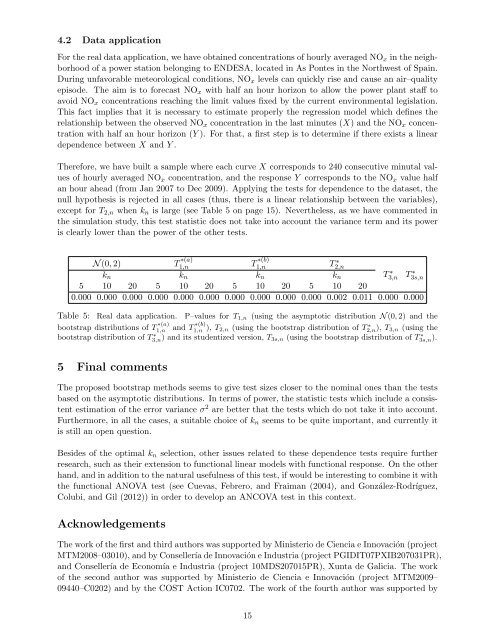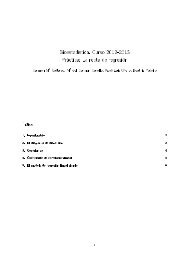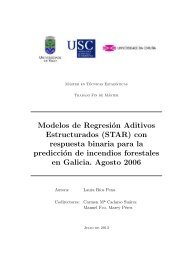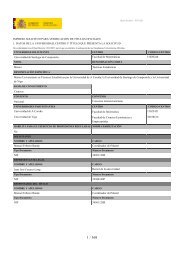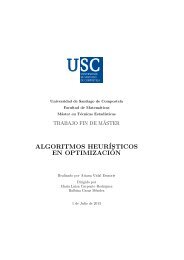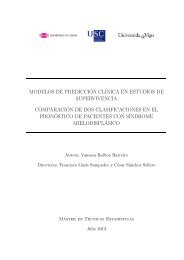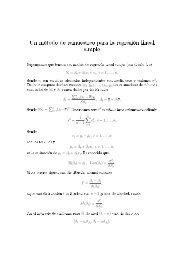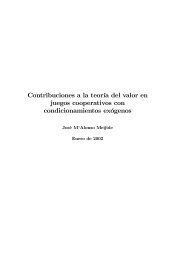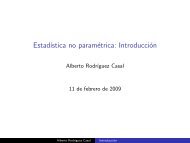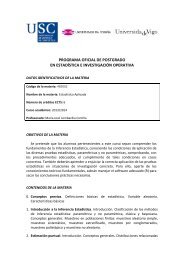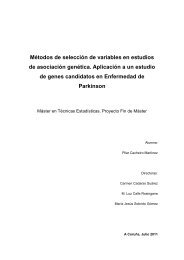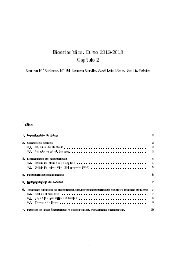Bootstrap independence test for functional linear models
Bootstrap independence test for functional linear models
Bootstrap independence test for functional linear models
You also want an ePaper? Increase the reach of your titles
YUMPU automatically turns print PDFs into web optimized ePapers that Google loves.
4.2 Data applicationFor the real data application, we have obtained concentrations of hourly averaged NO x in the neighborhoodof a power station belonging to ENDESA, located in As Pontes in the Northwest of Spain.During unfavorable meteorological conditions, NO x levels can quickly rise and cause an air–qualityepisode. The aim is to <strong>for</strong>ecast NO x with half an hour horizon to allow the power plant staff toavoid NO x concentrations reaching the limit values fixed by the current environmental legislation.This fact implies that it is necessary to estimate properly the regression model which defines therelationship between the observed NO x concentration in the last minutes (X) and the NO x concentrationwith half an hour horizon (Y ). For that, a first step is to determine if there exists a <strong>linear</strong>dependence between X and Y .There<strong>for</strong>e, we have built a sample where each curve X corresponds to 240 consecutive minutal valuesof hourly averaged NO x concentration, and the response Y corresponds to the NO x value halfan hour ahead (from Jan 2007 to Dec 2009). Applying the <strong>test</strong>s <strong>for</strong> dependence to the dataset, thenull hypothesis is rejected in all cases (thus, there is a <strong>linear</strong> relationship between the variables),except <strong>for</strong> T 2,n when k n is large (see Table 5 on page 15). Nevertheless, as we have commented inthe simulation study, this <strong>test</strong> statistic does not take into account the variance term and its poweris clearly lower than the power of the other <strong>test</strong>s.N (0, 2)T ∗(a)1,n T ∗(b)1,n T2,n∗k n k n k n k n T3,n∗ T 3s,n∗5 10 20 5 10 20 5 10 20 5 10 200.000 0.000 0.000 0.000 0.000 0.000 0.000 0.000 0.000 0.000 0.002 0.011 0.000 0.000Table 5: Real data application. P–values <strong>for</strong> T 1,n (using the asymptotic distribution N (0, 2) and thebootstrap distributions of T ∗(a) ∗(b)1,n and T1,n ), T 2,n (using the bootstrap distribution of T2,n), ∗ T 3,n (using thebootstrap distribution of T3,n) ∗ and its studentized version, T 3s,n (using the bootstrap distribution of T3s,n).∗5 Final commentsThe proposed bootstrap methods seems to give <strong>test</strong> sizes closer to the nominal ones than the <strong>test</strong>sbased on the asymptotic distributions. In terms of power, the statistic <strong>test</strong>s which include a consisten<strong>test</strong>imation of the error variance σ 2 are better that the <strong>test</strong>s which do not take it into account.Furthermore, in all the cases, a suitable choice of k n seems to be quite important, and currently itis still an open question.Besides of the optimal k n selection, other issues related to these dependence <strong>test</strong>s require furtherresearch, such as their extension to <strong>functional</strong> <strong>linear</strong> <strong>models</strong> with <strong>functional</strong> response. On the otherhand, and in addition to the natural usefulness of this <strong>test</strong>, if would be interesting to combine it withthe <strong>functional</strong> ANOVA <strong>test</strong> (see Cuevas, Febrero, and Fraiman (2004), and González-Rodríguez,Colubi, and Gil (2012)) in order to develop an ANCOVA <strong>test</strong> in this context.AcknowledgementsThe work of the first and third authors was supported by Ministerio de Ciencia e Innovación (projectMTM2008–03010), and by Consellería de Innovación e Industria (project PGIDIT07PXIB207031PR),and Consellería de Economía e Industria (project 10MDS207015PR), Xunta de Galicia. The workof the second author was supported by Ministerio de Ciencia e Innovación (project MTM2009–09440–C0202) and by the COST Action IC0702. The work of the fourth author was supported by15


